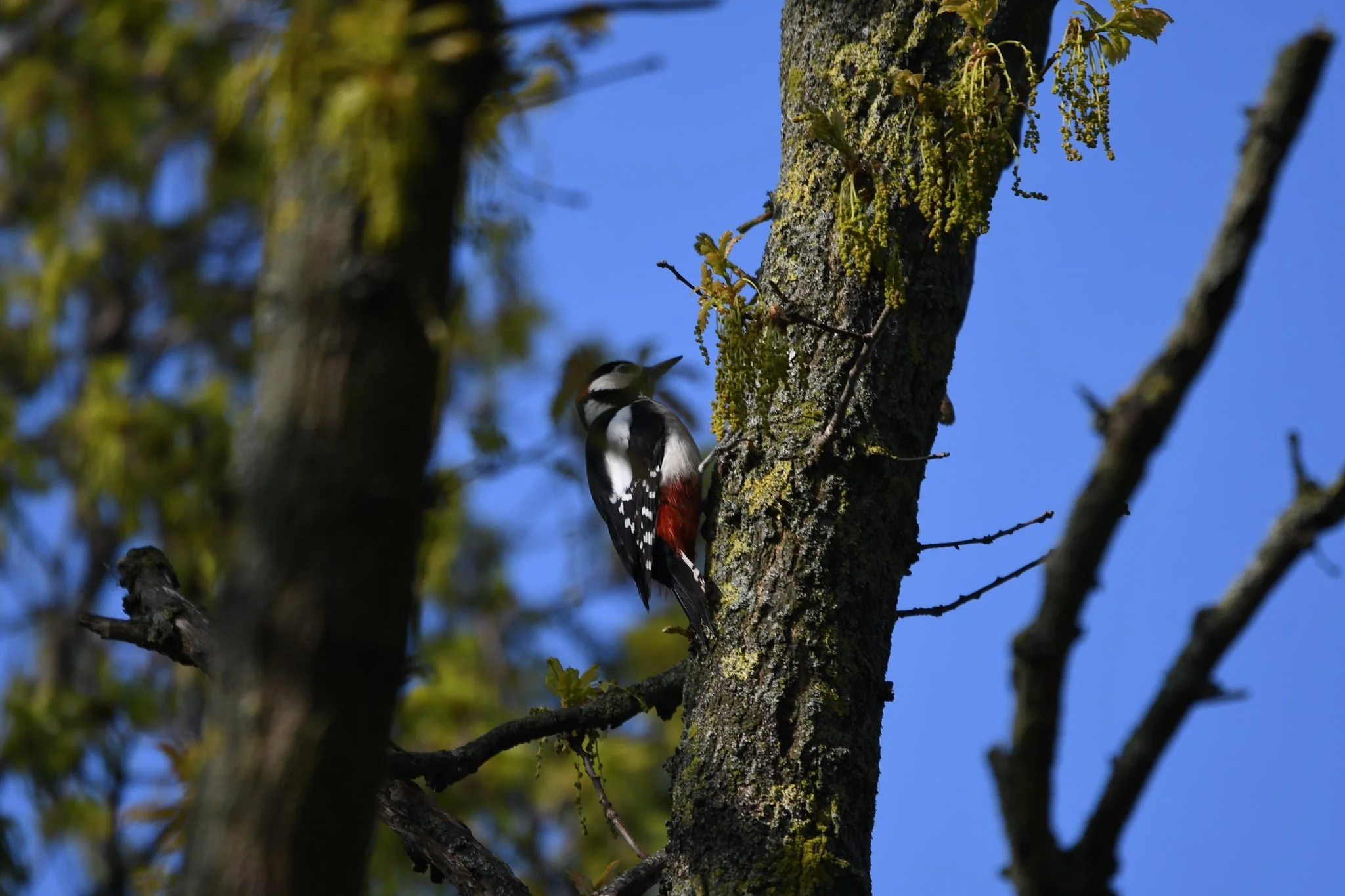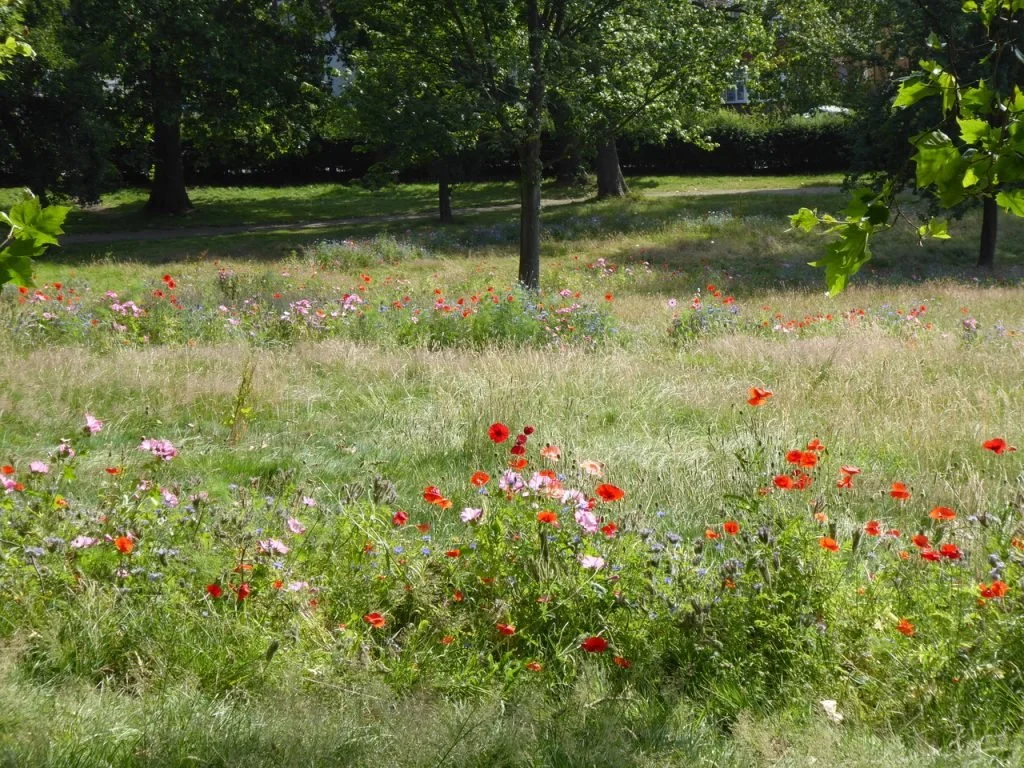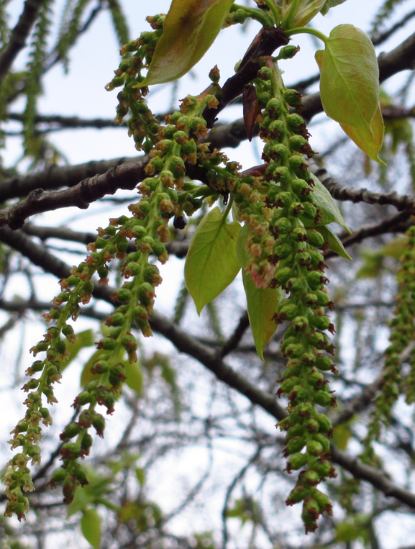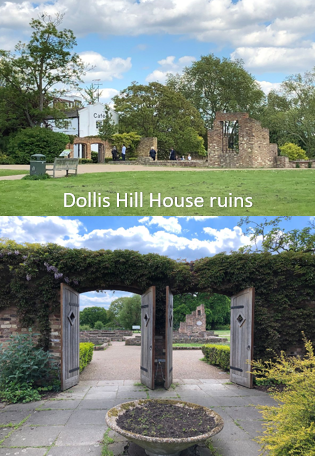Gladstone Park
Introduction
How lucky we are to have such a magnificent, beautiful and well-cared for park. Eighty-six acres of parkland (within Brent’s Dollis Hill Ward), it is a richly diverse mix of wild hilly meadowland, flat green spaces, miles of curving pathways, tree-lined avenues, recreational and sporting facilities and boasting a stunning walled garden (an absolute must-see), rose terraces, duckpond, a heritage-listed prisoners of war memorial sculpture the The Stables Cafe, all with cross-London views.
The park stretches from it’s south-east corner, at Anson Road and Melrose Avenue, north to Dollis Hill Lane and west to Park View Road intersected by the Metropolitan line.
The park offers walkers and ‘sporters’, families and dog-walkers endless opportunities for recreation with access to an artificial cricket pitch, football and rugby pitches, basketball courts, an outdoor gym and tennis courts. Find out more on the Brent Website.
Morning! By Melanie B
Wildflower meadows in the Park
In 2019 Brent Council introduced wildflower meadows, bringing back so much environmental benefits. Brent Council have been working across the borough and the wildflower meadow in Gladstone Park is one of 22 which Brent planted to make up Brent’s Bee Corridor.
Thanks to Brent Council for the following: “Wildflowers add bursts of colour into our parks, as well as encouraging visits from butterflies, moths, dragonflies, bees and numerous other pollinating insects.
Meadows have their own life cycle over the course of a year. In the spring, we will rotate the ground and sow new seeds. Over the summer months the grasses and flowers will be allowed to grow long and lustrous, before being cut back in the autumn ready for the next year.”
Trees in Gladstone Park
The park boasts a broad array of tree species. The avenues across the park are lined with London Plane Trees planted at the beginning 1900’s. Some of them were brought from nearby Roundwood Park. It is a strong tree whose roots cope with being covered by paving and concrete and the peeling bark allows the tree to slough off pollution easily. Oak trees and their yellow catkins have to produce huge amounts of pollen as it is wind pollinated and much is wasted. Tiny pollen grains are blown by the wind to pollinate other oaks and produce acorns, a fruit much loved by squirrels, and jays who bury them in the soil and help them spread around. The line of oaks along paths leading uphill in the park (which was once a farm track) date from 1860 before the railway line was built.
There is an old pear tree with distinctive cracked bark which produces white blossom and fruit beloved by thrushes and blackbirds. It is thought that it was introduced to Britain around 995. As its wood does not retain smells and resists warping and splintering it is much used for making kitchen utensils. There are several species of evergreen Eucalyptus, an Australian native. Notice when you next go for a walk in the rain how spectacular their bark looks when it’s wet. Eucalyptus are highly flammable and burn at a very high temperature which is why some hot, dry countries like South Africa are trying to remove those they planted as these hot fires can destroy their native flora. The oddly-named Fastigiate or Pyramid Oak also features in the park along with the (picture to the right) the Eastern Balsam Poplar (Populus balsamifera) which also sports long catkins and is wind-pollinated.
The park is home to a Grade II listed sculpture, ‘the memory of prisoners of war and victims of concentration camps 1914–1945’, by sculptor and medallist Fred Kormis who himself was interned in a Siberian prisoner of war camp. Unveiled in 1969, the sculpture comprises five figures, depicting different states of tortured internment. Find our more at this link.
In 2021, the Bangladesh High Commission, supported by the local community, provided 100 new trees to commemorate 50 year of Bangladesh independence and the centenary of the birth of its founding president Bangabandhu. Find out more on the Friends of Gladstone Park website.
Green Woodpecker in Gladstone Park (by unknown!)
Robin in Gladstone Park by Andy F
Hawk Owl (maybe) in Gladstone Park, by Chloe O
Great Spotted Woodpecker in Gladstone Park by Andy F
Brief history of Gladstone Park
Parks have long been championed and valued especially in cities and have been referred to as the ‘lungs’ of a city. In the early 19th century Victorian England, the drive to create more public parks in London was underway. Towards the end of the century Willesden had begun its transition from rural farmland to becoming an urban area of the growing metropolis, with improved rail connections encouraging this. So it was that the municipality purchased a part of the estate that belonged to the Finch family creating what is now known as Gladstone Park. Dollis Hill House and its gardens, forming part of this estate, were also purchased and in 1901 the park opened officially.
District Council Surveyor Olivier Claude Robson chose to retain much of the rural characteristics of Gladstone Park, adding an open-air swimming pool, bowling green, bandstand, play areas, sports facilities, flower garden and all interconnected by pathways lined with London plane trees. Until 1910 sheep were also allowed to continue grazing in the park.
It is well known that the history of Gladstone Park is strongly linked to the story of Dollis Hill House and its estate. The house itself played host to an impressive list of visitors and inhabitants including, amongst others, author Mark Twain and Prime Minister William Gladstone.
Despite its Grade II listing and impressive visitors Dollis Hill House nevertheless eventually fell into disrepair and was sadly demolished in 2012. Gladstone Park are now home to only an outline of the foundations and a plaque commemorating the main building, the stables-turned-café, walled garden and duck pond all of which formed part of the original estate.
Thanks goes to the Dollis Hill House Trust and the Willesden Local History Society for their passion and commitment to documenting and retaining the spirit of Dollis Hill’s more salubrious contribution to the area.
Morning! Thanks to Chris Elsdale
Friends of Gladstone Park
The Friends of Gladstone Park is a well-established, committed and passionate group of volunteers, made up of local residents and lovers of the park, who “encourage everyone who loves Gladstone Park to protect, promote and enjoy it as a place of historic and ecological interest as well as beauty.” Working closely with Brent Council to upkeep and maintain the park they run several activity and interest groups offering community and family-friendly improvement and nature-focused initiatives, including an array of special-themed walks. Much of the charm, special areas including the walled garden (regularly winning GOLD at the London in Bloom competition) and special projects are delivered by volunteers through the group. Moved to the area and want to meet your neighbours? Find out more and contact them via their website (linked above) or their Facebook page, via this link.
Not sure who took this, anyone know?
London Plane Trees create one of many avenues criss-crossing Gladstone Park.
Birds in Gladstone Park
With thanks to Friends of Gladstone Park for many of these pictures.
The magnificent chap in green, is a Green Woodpecker, and there is an area in the park to listen out for the laughing call of them - but better check the The Friends of Gladstone Park Facebook group to ask if anyone knows where.
Much thanks to resident and park-lover Andrew Benbow, for this lovely seasonal account of the bird life in this beautiful park
Gladstone Park has plenty of interest for the casual birdwatcher, with numerous different habitats that hold a varied amount of species - as many as 50 can be seen in a year. As always with birds, you never know what might turn up - from Red Kite to Waxwings - so keep your eyes peeled!
WINTER
In winter it is all about the gulls, with huge flocks of Black-headed Gulls taking residence on the playing fields. Herring Gulls and Lesser Black Backed Gulls are in amongst them, as are Common Gulls. The resident Rose-ringed Parakeets provide flashes of colour and noise, while it is a good time to see the tit flocks moving through the park, with Blue, Great, Coal, and Long-tailed Tits all present. Rarer birds that have been seen in winter include Woodcock, who can drop in while flying over.
SPRING
Breeding activity is in full swing. House Sparrows are active around the edges of the park, Robins are signing for their territory, and Goldfinches make themselves seen and heard. Goldcrests can be found in the fir trees in the west of the park, and this can be a good time to see them. You may also hear Great-Spotted Woodpeckers drilling in the horse chestnut tree by the cafe, or in the wood, while Green Woodpeckers favour the oak trees by the Polish war memorial.
SUMMER
With the warm weather come the Swifts, which can be seen high above the park or heard screaming as they tear through the roads nearby. Swallows can be seen, but are generally scarce, while birds of prey such as Red Kite and Buzzard can drift over the park. Peregrines perch on the water tower, Sparrowhawks are resident, and Kestrels can also be seen. Hobbies can pass through at this time of year, a Lesser Whitethroat often takes up territory in the scrub by the bridge, and both Stonechat and Whinchat are scarce visitors. Warblers will also be present, with Chiffchaffs signing regularly, and Blackcaps found by the railway line.
AUTUMN
As the weather turns colder our wintering thrushes join the Mistle and Song Thrushes, with Redwing coming over from Scandinavia, and the occasional Fieldfare amongst them. The Mallard and Moorhen families will be on the pond, with Gadwall often also seen. Wrens are flitting through the dense vegetation, often noisily singing in a way that belies their size. Hundreds of Starling flock on the playing fields, and as these are a declining species should be appreciated. The resident and beautiful Jays can also be seen storing acorns for the winter.
Andrew Benbow, October 2024.
Historical pictures of the High Road and Junction with Walm Lane, Courtesy of Images of London
Dollis Hill House ruins, and view from the Stables










